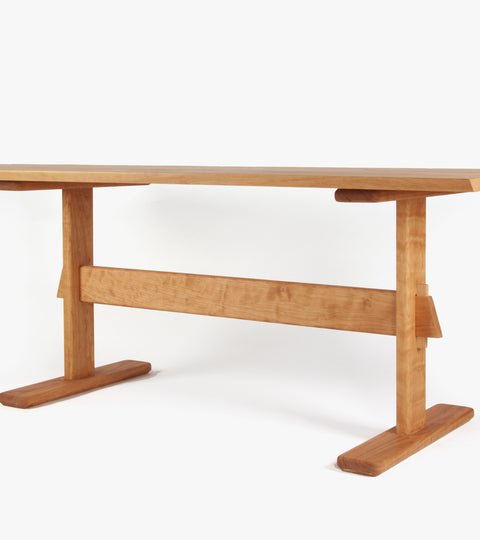Designing Circulation
Building the first fully circular furniture system
PART I
The idea of Design Circulation—furniture never discarded nor destroyed, but circulated from home to home in an endless, closed loop—was clearly compelling. But the idea was only meaningful if we could build a self-sustaining business around it at scale. From the beginning, we felt certain that Design Circulation could only succeed only if it could first succeed as a business.
In early 2017, we put together a team of furniture makers and industrial designers to help us develop Design Circulation. We thought we’d have it figured out within a couple months. Instead, it took us a year and a half.
We knew the process of building Design Circulation would begin with the consumer. In order to make Design Circulation a successful business, and thereby effective as a sustainable alternative to furniture consumption, we would need to design a compelling value proposition for our customers. Furthermore, we felt that value proposition would need to extend beyond the design of the furniture in and of itself. If people were going to participate in Design Circulation, they’d need to be incentivized economically.
Design Circulation was in large part about flexible ownership. We wanted to make it easier for people to update the furniture in their homes—or to provide them with a way of reclaiming value from the furniture they no longer needed. People’s circumstances—their needs and tastes—change. We felt that a person shouldn’t be forced to accommodate their furniture. Instead, their furniture should accommodate them. We imagined a customer buying a coffee table for their city apartment, but, a few years down the line, moving into a larger apartment or a house, and wanting a bigger coffee table to match. We wanted to minimize the burden of purchasing that new coffee table. Our customer would return the first to us, receive a significant amount of store credit, and use that store credit towards their new coffee table.
Executing on this plan took us in directions we hadn’t imagined. Our team grew to include a PhD in operations research, who helped us build a pricing model, as well as an actuary, who helped us forecast the future risk of guaranteeing so much store credit. We were forced to reimagine our fulfillment and logistics, as well as our approach to the design of the furniture itself.
In the second part of this blog post, we’ll expand on some of the steps we took to get Design Circulation ready for launch.

